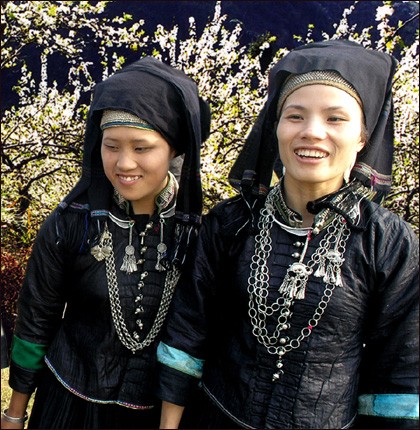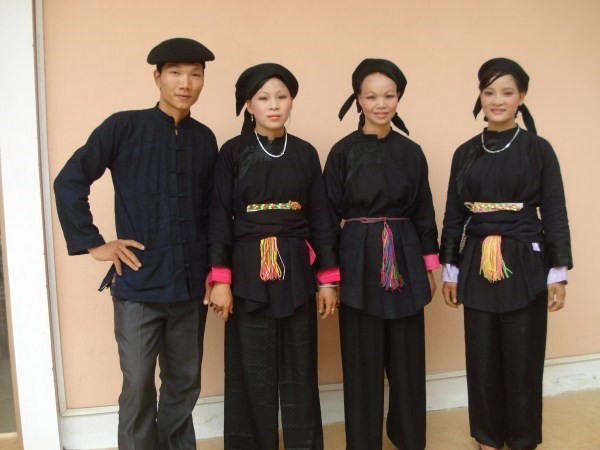(VOVworld) – The costume of the Nung is not as colorful as that of other ethnic groups. Nung clothes are made of indigo dyed fabric with very few decorations or embroidery. Their dressing habits reflect their culture and customs.
 |
| Nung Din girls |
The Nung live in high mountain areas. They weave and dye fabric and make their own clothes. Each Nung clan applies a slightly different decoration to their clothes, but in general Nung clothes are plain. Indigo is the main color, with variations of light blue, dark blue, and blue-black.
Painter Luu Tuan Phuong has studied the clothes of ethnic groups in Vietnam: “Nung clothes are designed a little bit differently in the different clans. In general they have designs for men and women, and people of different ages, social strata, or groups. Nung men usually don’t wear jewelry.”
 |
| Nung An people in Cao Bang province (photo: baocaobang.vn) |
Both men and women wear loose pants which are embroidered with colorful lines around the cuffs. The shirts have large sleeves which allow them to move freely. Men wear round neck, close-fitting shirts with 7 buttons and 2 or 4 pockets. Women’s clothes are more diverse. They wear round-neck shirts with 9 buttons. On the neck they embroider triangle, square, and diamond shapes. The button at the neck is made of silver and has a butterfly shape. It’s a symbol of happiness. A woman’s dress has a wide upper hem which is a collage of 12 pieces of colorful cloth symbolizing the 12 months.
Nguyen Thi Mai Anh, a designer and collector of ethnic clothes, said: “While collecting the clothes, I’ve had the pleasure of meeting ethnic people. So far there hasn’t been much written about Nung clothes. Their art of decoration is special. When I talked with them, I learned a lot about their culture. Their clothes reflect their life.”
Jewelry plays an important role in a Nung women’s dress style. A necklace and earrings are an indispensable part of their clothing. Nung Din women always wear two headscarves tied in the shape of buffalo horns because their group considers the buffalo a family’s most valuable asset.